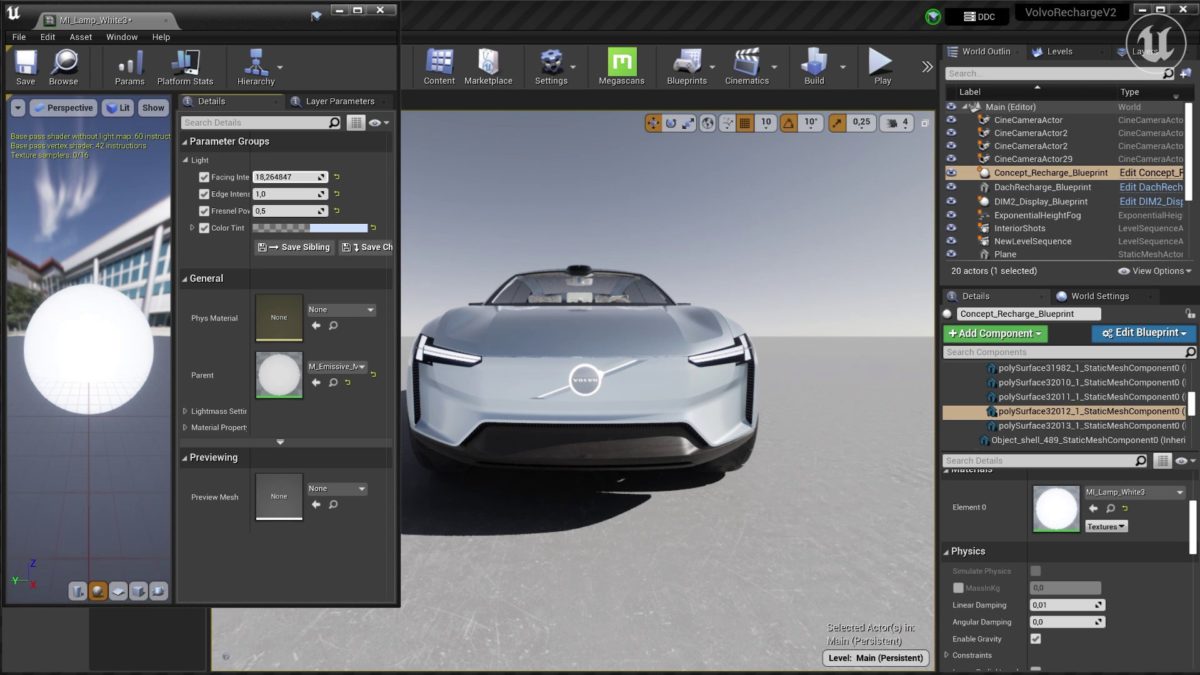Volvo announced it has teamed with Epic Games to bring the latter’s Unreal Engine into upcoming vehicles and provide the best graphics for its interfaces. Known for games like Fortnite, Epic Games is also famous for developing one of the most advanced real-time 3D creation tools and it will now find its way into the automotive space.
Volvo is the first European brand to use the Unreal Engine for infotainment system development and will use it specifically for the driver information module, also known as the digital gauge cluster.
The new interface in upcoming Volvo cars will have sharper renderings, richer colors, and new 3D animations thanks to the Unreal Engine. Volvo developers intend to push the graphic envelope using this new tool and are making initial progress with upcoming battery-electric vehicles. “To offer our customers the best possible user experience and contribute to a safe and personal drive, we need rich, immersive, and responsive visualization inside our cars,” said Henrik Green, Chief Product Officer at Volvo Cars. “Running Unreal Engine in our cars enables this and makes it even more enjoyable to spend time inside a Volvo.”
To achieve the new graphics standard Volvo is aiming for its infotainment systems, it will pair the Unreal Engine with the third-generation Snapdragon Cockpit Platforms. This will result in an interface that’s twice as quick as its predecessor and its processing speed is ten times faster. Heiko Wenczel, Director of Automotive and HMI for the Unreal Engine at Epic Games, noted bringing interactive and real-time high-resolution graphics into a vehicle opens new ways to inform and entertain occupants. “Volvo Cars’ deeply talented design and product development teams have grasped this opportunity to do something fresh that will keep evolving with exciting new features that take advantage of the capabilities of Unreal Engine,” added Wenczel.
Volvo sees additional opportunities to utilize the Unreal Engine to advance other areas of technology for its vehicles. As its developers continue to look for new applications for this and other software-focused technologies, it will continue to prioritize safety, which is one of the brand’s hallmarks. The Swedish brand aims to develop half of the software in its vehicles in-house by the middle of the decade and is recruiting talent extensively for this task and other in-car applications.
The first Volvo to use the new infotainment system with the Unreal Engine will be the upcoming all-electric flagship that will be revealed later this year. It will be the first of a new generation of BEVs as Volvo gradually phases out all models with internal combustion engines by 2030. This vehicle will be built at the South Carolina plant alongside the Polestar 3. Both vehicles are among the first to use the SPA2 architecture, which has been developed to fit a broad range of electrified powertrains including fully electric ones. The new flagship slots above the XC90 and will likely wear the Embla name.
Eventually, Volvo will have seven BEVs by the middle of the decade. The initial two were the XC40 Recharge and C40 Recharge, which were also the first Volvo vehicles to switch to Google’s Android Automotive operating system. Following them this year will be the Embla and then the third-generation XC60, which will get an all-electric model. Sedans and wagons will remain in the lineup but will likely be to the next-generation S60 and V60, and the S90 and V90 Cross Country for the North American market. A small electric crossover slotting below the XC40 is currently under development with the project code V216. There’s also a wagon-like crossover dubbed the V546 in the works and will also be made in South Carolina alongside the Embla and Polestar 3.
